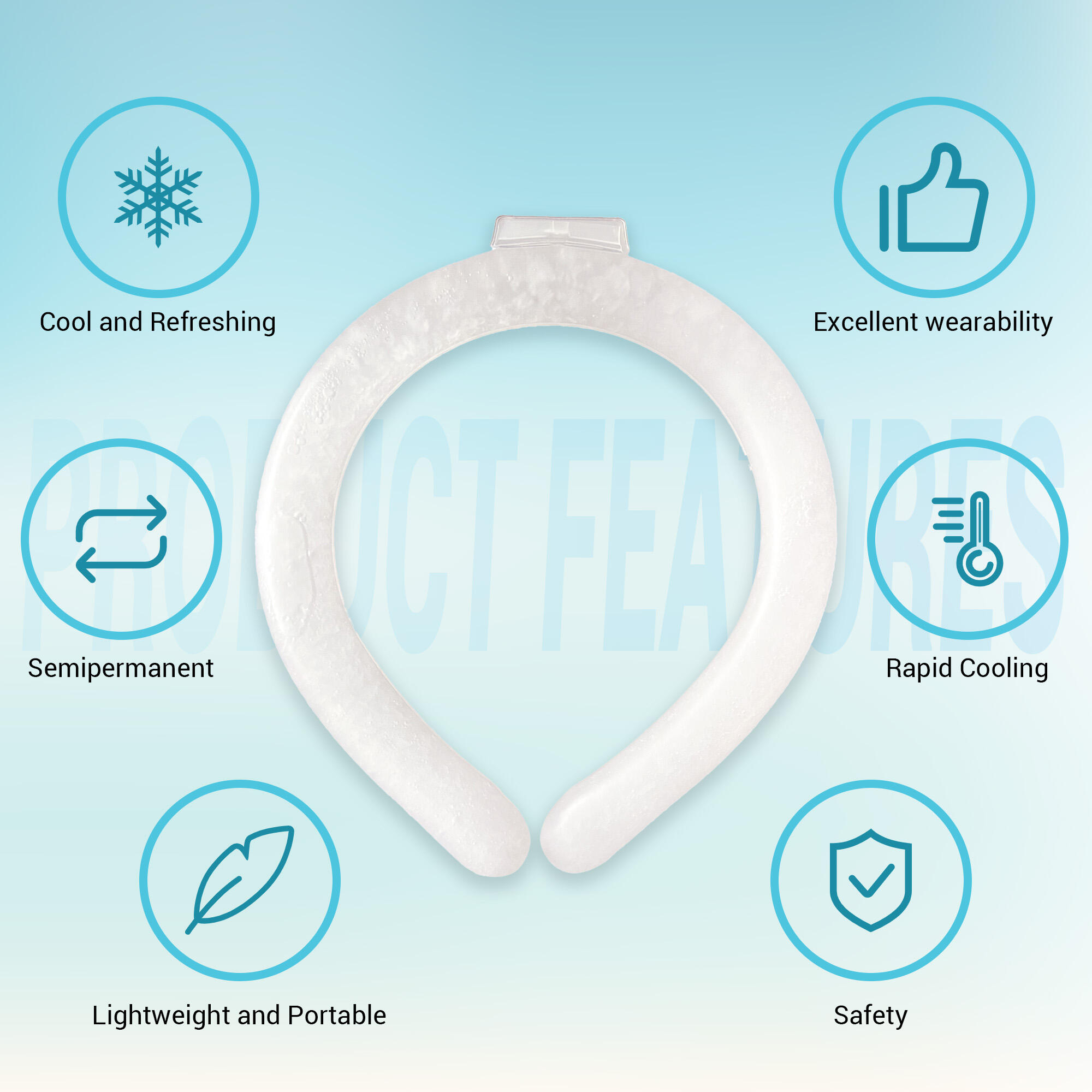냉압박 요법의 이점 이해하기
혈관 수축과 통증 완화의 작용 메커니즘
아이스 압박 요법은 혈관 수축을 유도합니다. 즉, 혈관이 수축하면서 혈류가 최대 30%까지 감소하게 됩니다. 이 복합적인 요법은 신경을 마비시켜 통증 신호를 줄이고, 대사 속도를 늦추어 세포 손상을 감소시키는 작용을 합니다. 2025년 Scientific Reports에 발표된 연구에 따르면, 냉각 적용은 프로스타글란딘 생성을 줄여 휴식만 했을 때보다 염증 관련 불편함을 42% 감소시킬 수 있습니다. 또한 요법의 기계적 압박 요소는 손상 초기 회복 과정에서 약해진 부위를 안정화시켜 미세 파열이 생기는 것을 도와줍니다.
부기 및 염증 감소에 대한 역할
손상 후 과도한 체액 축적 또는 부종을 통제된 저온에 의한 혈관 수축을 통해 제한함으로써, 냉온 압박 부상 후 72시간 이내에 염증과 부종을 평균 58% 감소시킵니다. 임상시험을 통해 압박 치료가 림프 배출 효율성을 27% 증가시켜 인터루킨-6와 같은 염증성 바이오마커를 신체 외부로 신속하게 이동시킨다는 것이 입증되었습니다. 이러한 복합적인 효과는 관절 손상에 특히 유용하며, 관절 내 압력이 낮아지면서 통제되지 않은 염증 반응으로 인한 연골 손실을 줄일 수 있습니다.
조직 복구 과정 가속화
기존의 '휴식만' 치료 방법과 달리, 냉온 압박 실제 치유 속도를 높이고 불편함을 줄여주며 1도 또는 2도 등급의 근육 긴장(스트레인)에 권장되는 치료법입니다. 염증 후 36.5°C 또는 38.5°C의 적당한 자가 온열 치료는 염증 세포의 과도한 산소 요구량을 19% 줄여줍니다. 치료의 압력 순환 주기는 자연스러운 근육 펌프 작용을 모방하여 치유 조직에 무리를 주지 않으면서 혈액 순환이 기본 수준을 유지할 수 있도록 하여 힘줄의 흉터 조직 형성을 33% 줄이는 데 도움을 줍니다.
냉찜질의 올바른 적용 기법
아이스팩 대 크라이오써피: 최적의 사용 사례
아이스팩은 염좌, 근육 긴장, 부딪힘, 멍, 두통, 치통 및 기타 경미한 부상에 대한 냉각 치료를 제공합니다. 하루에 3~4회, 15~20분 동안 냉각 치료를 사용하는 것이 좋습니다. 냉각 치료는 자연스럽게 통증과 부기를 완화시켜 근육통과 통증에 효과적인 치료법입니다. 전문적인 환경에서 사용되는 크라이오써피 시스템은 보통 지연성 근육통과 같은 증상에 대해 섭씨 -110°C에서 -140°C 사이로 설정됩니다. 재사용 가능한 젤 삽입물이 들어간 아이스팩은 집에서도 사용할 수 있지만, 전신 노출 시 동상의 위험이 있기 때문에 크라이오써피는 반드시 임상적 관리 아래에서 이루어져야 합니다.
집중적인 완화를 위한 아이스 마사지 방법
아이스 마사지는 히터 부위와 같은 작은 부상 부위에 얼음 조각이나 얼린 병으로 원형 운동을 하는 것입니다. 7분 이내의 치료는 피부 손상 없이 혈관 수축 효과를 얻을 수 있습니다. 2024년 생체역학 연구에서는 이 기법이 과사용 부상 시 혈류 조절 기능을 개선하는 것으로 나타났으며, 정적 얼음과 압박 치료에 비해 통증 감소 효과가 68% 더 높은 것으로 나타났습니다.
최대 효과를 위한 자세 전략
냉팩을 피부에 평평하게 놓기보다 관절 윤곽에 밀착시켜 고정하십시오. 손상된 부위를 심장보다 높게 들면 무릎 부상 시 부종이 40% 감소합니다. 20분간의 치료 세션 동안 10분마다 압박 장치의 위치를 변경하여 열 적응을 방지하고 균일한 냉각과 지속적인 치료 효과를 유지하십시오.
지속 시간 및 빈도 가이드라인
20분 규칙: 초기 적용의 과학적 근거
냉동 압축 치료에서 사용되는 20 분 간 적용 시간은 체내의 냉동 반응에 기초합니다. 일부 동맥도 초기 혈관 경축 중에 닫히고 혈액 흐름을 40%~60% 감소시키고 부풀어오르는 신호와 통증을 차단합니다. 이 경계 이상에는 반응성 과혈증의 정도가 회복 혈관 확장으로 이어지며 염증을 악화시킬 수 있습니다. 임상 지침은 치료 효과를 유지하기 위해 얼음 패크를 15-20 분 동안 매 세션에 적용하고 피부가 얼음과 접촉할 때 발생하는 얼음 물린을 피하는 것이 좋습니다.

만성 부상에 대한 최적의 치료 간격
만성 부상에 냉찜질을 사용하는 경우; 얼음찜질은 24~48시간 간격을 두고 시행해야 한다. 2021년에 발표된 임상 연구 분석에 따르면, 코로나19 팬데믹으로 인해 장애를 가진 비노년층 미보험 가입자들이 경제적 타격을 크게 받았다. SHADAC(주정부 건강 접근 데이터 지원 센터)는 향후 12개월 동안 일련의 계획된 보고서를 통해 미보험 인구 집단에 대해 보다 면밀히 조사할 예정이다. 보다 안정적이고 신뢰성 있는 데이터가 확보되는 대로 이 인구 집단에 대한 분석도 보다 심화될 전망이다. 치료사들은 또한 치료 세션 간 피부 반응을 추적하고 통증 수준에 따라 사용 빈도를 조절할 것을 강조한다. 이는 보통 48시간 이후에는 매일 시행하지 않는 급성 부상 치료 프로토콜과 구별되는 중요한 차이점이다.
안전 고려사항 및 주의점
동상 예방: 피부 보호 기술
저온 치료의 효과는 피부와 냉각원 사이의 우수한 단열 성능에 달려 있습니다. 항상 면 수건과 같은 통기성 있는 매개체를 사용하여 노출을 제한하십시오. 얼린 물체와의 직접 접촉은 동상 위험을 63% 증가시킵니다. 한 번에 20분 이내로 시술하며, 피부가 창백해지거나 감각을 잃을 경우 매시간 간격을 두어야 합니다. 힘줄 부상을 입은 운동선수라면 반드시 재사용 가능한 젤 팩을 사용해야 합니다. 피부층이 찢어지거나 벗겨지는 일이 없이 균일한 압박을 유지할 수 있습니다.
신경 손상을 방지하기 위한 감각 검사
혈액 순환이 저하되었거나 기존의 신경병증이 있는 경우 냉각 적용 시 철저한 모니터링이 필요합니다. 5분 간격으로 다음 평가를 수행하십시오:
- 가벼운 손끝 압력으로 촉각 반응 검사
- 비치료 부위와의 온도 감지 비교
- 자연광 아래에서 손톱 침 색상 분석
치료 시간 이후에도 감각 상실이 지속되거나 파란색 회색 피부 변색이 나타나면 즉시 사용을 중단하십시오. 당뇨병성 신경병증 환자는 정적인 얼음 주머니보다는 조절 가능한 벨크로 붕대로 교체하여 초기 경고 증상이 나타날 때 빠르게 체온을 회복할 수 있습니다.
혈액 순환 장애에 대한 금기 사항
냉찜은 혈관을 수축시키는 것으로 잘 알려진 저온과 압력을 가합니다. 이러한 집단에서 오래 지속된 혈관 수축은 기저 수준에 비해 혈류를 최대 89%까지 줄일 수 있으며, 이로 인해 조직 괴사가 발생할 수도 있습니다. 대비 목욕(온도와 냉도를 번갈아 적용)과 같은 다른 회복 프로토콜은 모세혈관에 덜 부담을 주면서 더 큰 효과를 가져올 수 있습니다. 냉각 요법을 시작하기 전에 반드시 말초 맥박을 촉진 확인하십시오.
RICE 방법과의 통합
콜드 컴프레션 치료는 RICE 프로토콜(휴식, 냉찜, 압박, 올리기)과 병용할 때 그 진정한 효과를 발휘합니다. 이 다중 치료 접근법은 급성 부상 회복을 위해 상호 보완적인 생물학적 작용을 활용하지만, 치료자는 각 요소를 신중하게 조절하여 부정적인 영향을 피해야 합니다.
아이스와 압박의 시너지 효과
냉각 치료와 압박을 병합하여 단계적인 치유 효과를 제공합니다. 얼음은 단기적이고 국소적인 혈관 수축을 유도하고 부상 부위의 혈류를 약 1/3 수준으로 낮추는 반면, 압박 붕대는 부종을 방지합니다. 두 기법을 병용할 경우, 발목 염좌 재활 연구에 따르면 얼음 단독 사용 시보다 부종 감소 속도가 47% 더 빠릅니다.
냉각 치료를 향상시키는 올리기 전략
심장 수준보다 부상 부위를 6~12인치 높이로 올리는 것은 냉각 치료를 할 때 중력의 도움을 받아 부종 감소에 효과적인 것으로 밝혀졌습니다. 무릎 부상의 경우, Donjoy Iceman을 이용한 20분간의 얼음 치료와 함께 30도 경사면에서 다리를 들고 있으면 수평 상태에서 얼음 치료만 할 때보다 혈액 재관류 효과를 28% 더 높일 수 있습니다. 의료 전문가들의 권고에 따르면, 냉각 치료 기간 동안은 얼음 적용 시뿐 아니라 지속적으로 다리를 올려야 합니다.
산업적 역설: 휴식이 회복을 방해할 때
일반적으로 급성 손상의 악화를 막기 위해서는 충분한 휴식이 필요하지만, RICE 치료 프로그램 동안 장기간의 고정은 치유를 방해할 수 있습니다. 2023년에 밝혀진 바에 따르면, 2도 근육 파열에서 72시간 이상의 완전한 비활동은 근육 위축 위험이 19% 증가시킵니다. 실제로 건염 및 근육 염좌에 대한 최신 지침에서는 수정된 휴식을 권장하고 있습니다. 즉, 손상된 조직을 보호하기 위해 고정 장치를 사용하면서도 통제된 움직임을 허용하여 관절 가동범위 또는 신경근 조절 능력 상실을 방지하는 방법입니다.
자주 묻는 질문
저온 압박 요법의 주요 이점은 무엇입니까?
저온 압박 요법은 혈관 수축과 통증 완화에 도움을 주며, 부종과 염증을 줄이고 조직 복구 과정을 가속화합니다.
저온 압박 요법은 어떻게 적용해야 합니까?
올바른 적용 방법은 얼음팩 또는 냉동요법 사용, 집중적인 완화를 위해 얼음 마사지 활용, 그리고 최대 효능을 위한 올바른 위치 선정 방법을 포함합니다.
저온 압박 요법에 권장되는 시간과 빈도는 얼마나 됩니까?
일반적인 규칙은 치료 효과를 높이기 위해 20분간 적용하고 만성 부상의 경우 권장 치료 간격을 준수하는 것입니다.
저온 압박 요법 시 고려해야 할 안전 예방 조치는 무엇입니까?
저온 압박 요법 시 동상 예방, 관련 감각 점검, 순환 장애가 있는 환자의 금기 사항은 고려해야 할 중요한 안전 요소입니다.
저온 압박 요법이 RICE 요법과 어떻게 결합되나요?
휴식(Rest), 냉찜질(Ice), 압박(Compression), 올려놓기(Elevation)로 구성된 RICE 요법은 상호 보완적인 생물학적 기전을 활용하여 급성 부상을 치료합니다.

